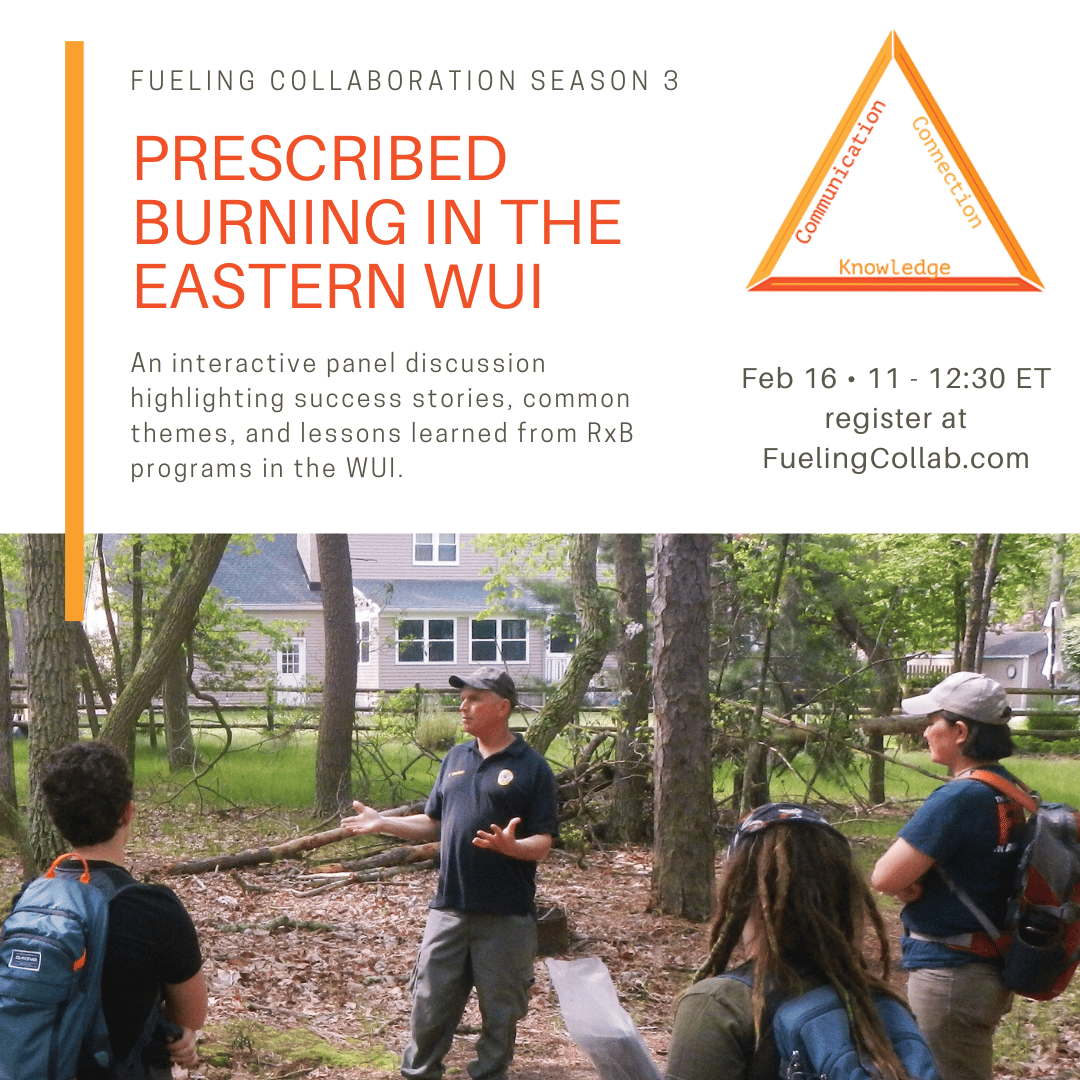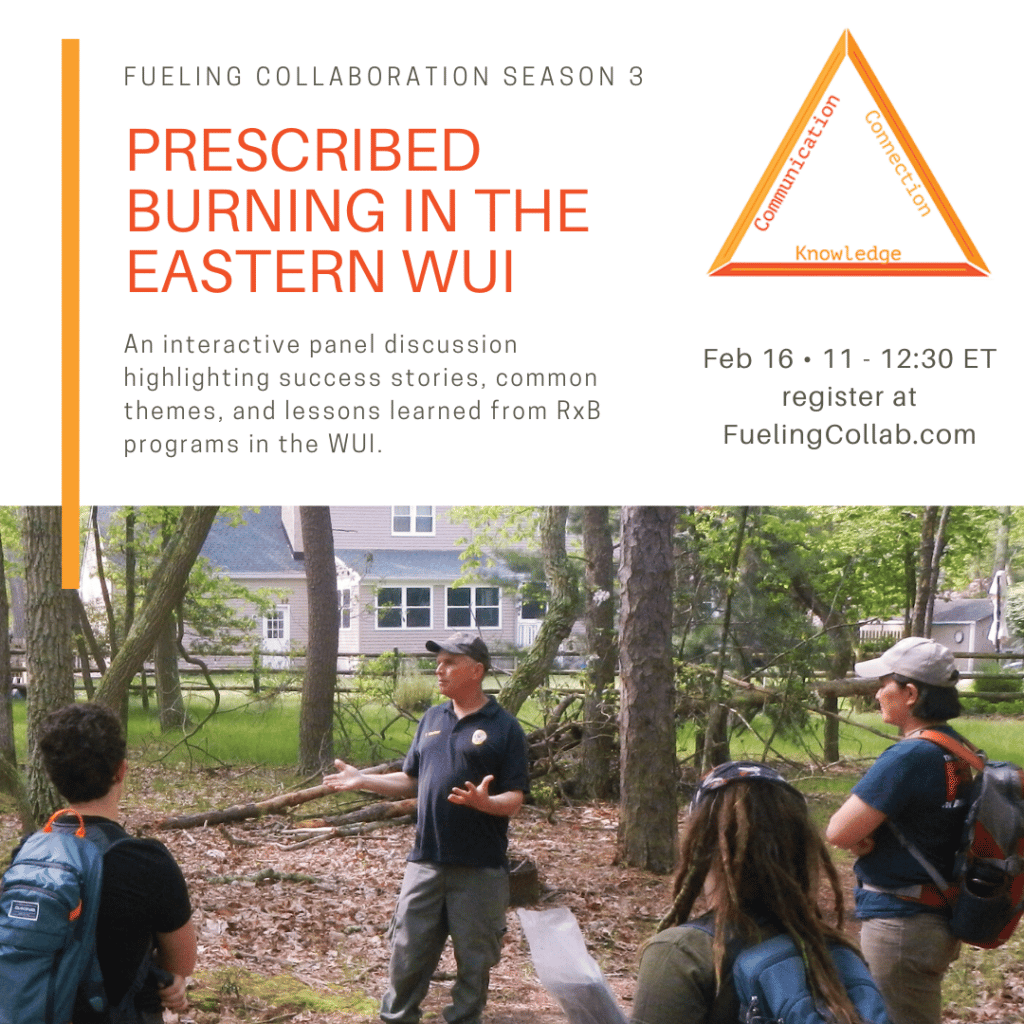Fueling Collaboration 3.0: Prescribed Burning in the Eastern WUI
February 16, 2023, 11:00AM – 12:30PM Eastern Time More and more natural resource managers in the eastern US are looking to use prescribed fire to reduce wildfire risk and manage ecosystems located in the WUI. Using prescribed fire in urban and suburban locations brings unique, intimidating challenges that can add to the complexity of a burn. In this panel discussion, we’ll highlight success stories, common themes, and lessons learned from prescribed fire programs in the WUI. This panel discussion counts for 1.5 Category 1 CFE’s by the Society of American Foresters. Register for the webinar here: https://www.fuelingcollab.com/register
Check out the entire Fueling Collaboration series
Continue Reading






